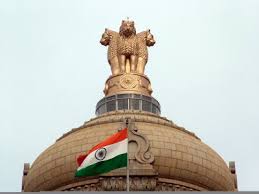
India’s Heritage Revival Plan
India’s Heritage Revival Plan Gains Momentum: Preserving Culture, Boosting Tourism, and Balancing Modernization
Heritage Revival India, a nation celebrated for its rich history and diverse culture, has embarked on an ambitious Heritage Revival Plan aimed at restoring monuments, rejuvenating traditional sites, and integrating heritage with modern urban development. The initiative comes at a time when historic landmarks face increasing threats from neglect, pollution, and unregulated urbanization.

This comprehensive article examines the scope of the plan, the reasons behind it, its expected social and economic impacts, and the debates surrounding cultural preservation in a rapidly modernizing India.
Background: India’s Vast Heritage Landscape
India has over 3,600 monuments and archaeological sites under the protection of the Archaeological Survey of India (ASI), in addition to thousands of temples, forts, palaces, stepwells, mosques, churches, and colonial-era structures maintained by states and local bodies.
From the Taj Mahal in Agra to ancient caves in Maharashtra, heritage sites embody India’s civilizational journey. However, many face challenges including:
- Encroachment and illegal construction.
- Environmental degradation and pollution.
- Lack of regular maintenance.
- Limited awareness among locals and tourists.
The Heritage Revival Plan is designed to address these gaps systematically.
Key Features of the Heritage Revival Plan
- Restoration of Monuments
- Structural conservation of forts, palaces, and archaeological remains.
- Scientific cleaning to reduce pollution stains, especially in marble and sandstone monuments.
- Adaptive Reuse of Heritage Buildings
- Converting old havelis, warehouses, and colonial buildings into cultural centers, museums, boutique hotels, and libraries.
- Tourism Infrastructure
- Improved visitor facilities, digital ticketing, guided tours, and multilingual apps.
- Focus on heritage circuits like Delhi-Agra-Jaipur, Varanasi-Sarnath, and Hampi-Badami.
- Community Engagement
- Involving local artisans, historians, and residents in decision-making.
- Training locals as guides, craft sellers, and cultural ambassadors.
- Green and Sustainable Practices
- Solar lighting, rainwater harvesting, and eco-friendly landscaping around heritage complexes.
Economic Impact: Linking Heritage with Tourism
Tourism contributes nearly 10% of India’s GDP, and heritage tourism forms a significant part of that. The plan aims to:
- Boost domestic and international tourism.
- Create jobs in conservation, guiding, hospitality, and handicrafts.
- Revive traditional crafts linked to heritage towns like Jaipur (jewelry), Varanasi (silk), and Kanchipuram (weaving).
Experts argue that investing in heritage is not a cost but an economic multiplier, strengthening both local economies and national branding.
Cultural and Social Significance
Beyond economics, heritage revival has deep cultural implications:
- It preserves traditions and narratives that shape Indian identity.
- It strengthens community pride and belonging.
- It provides educational opportunities for future generations.
For young Indians, many of whom are disconnected from their roots, heritage revival offers a chance to reconnect with history in contemporary formats.
Challenges and Criticisms
Despite optimism, the Heritage Revival Plan faces hurdles:
- Funding Gaps: Conservation projects often stall due to lack of funds.
- Modernization Pressure: Urban expansion risks overshadowing historic neighborhoods.
- Commercialization Fears: Critics worry heritage revival may prioritize tourism revenue over authenticity.
- Maintenance: Restoring monuments is one step; ensuring long-term upkeep is another challenge.
Activists also caution against projects that displace local communities in the name of beautification.
International Comparisons
Countries like Italy, Egypt, and Turkey have shown how heritage revival can boost both tourism and national prestige. For example:
- Italy’s preservation of Roman ruins has made them world-class attractions.
- Egypt leveraged pyramid conservation to revive global tourism.
- Turkey’s restoration of Ottoman and Byzantine sites boosted cultural tourism significantly.
India’s plan draws inspiration from such models but must adapt them to its scale and diversity.
Expert Commentary
Conservation Architect, Dr. Nandini Rao:
“India’s heritage revival must go beyond monuments. It should also conserve cultural landscapes, old bazaars, and living traditions.”
Tourism Analyst, Vikram Joshi:
“Every rupee spent on heritage conservation returns multiple times in tourism revenue. The key is balancing preservation with accessibility.”
Cultural Activist, Ritu Kapoor:
“Community participation is vital. Heritage is not just about stones—it’s about the people and stories tied to them.”
The Way Forward
For the Heritage Revival Plan to succeed, experts recommend:
- Strong Public-Private Partnerships (PPP): Engaging corporate funding under CSR initiatives.
- Digital Integration: Virtual tours, heritage apps, and VR experiences for global audiences.
- Education: Introducing heritage awareness programs in schools and colleges.
- Policy Transparency: Regular public audits of funds and projects.
- Inclusive Planning: Ensuring that conservation benefits local communities, not just tourists.
Conclusion
India’s Heritage Revival Plan is more than a policy—it is a vision for preserving the past while preparing for the future. By reviving monuments, engaging communities, and integrating sustainable practices, the initiative can reinforce India’s cultural identity, enhance global tourism appeal, and inspire pride among citizens.
Yet, its success depends on consistent funding, transparency, and genuine commitment to balancing heritage conservation with modern urban growth. If implemented effectively, the plan could mark a new chapter in how India protects and celebrates its timeless legacy.





1 thought on “India’s Heritage Revival Plan Gains Momentum”